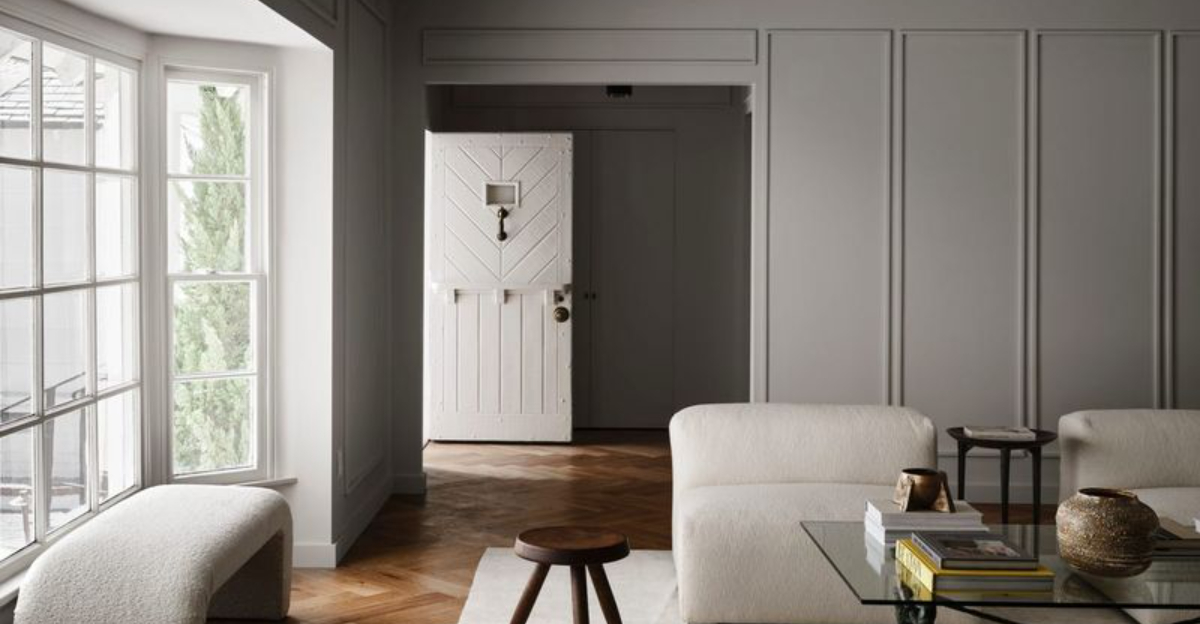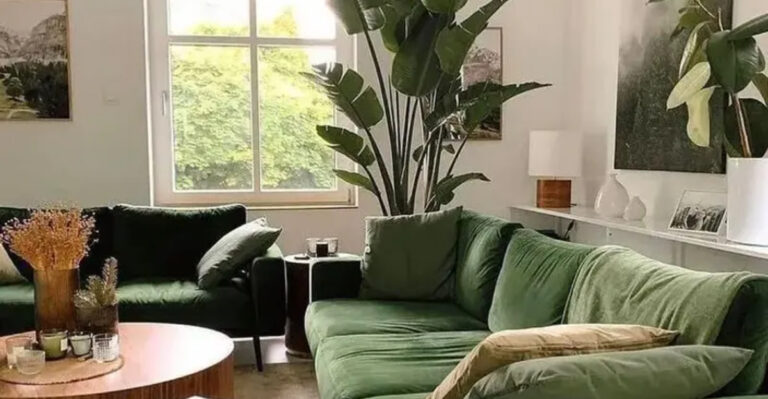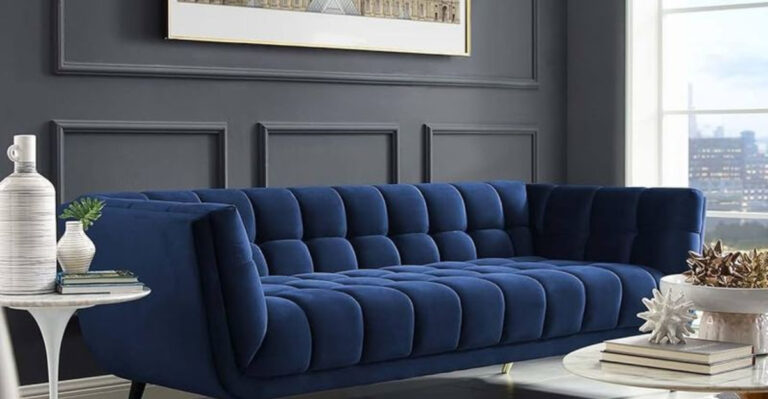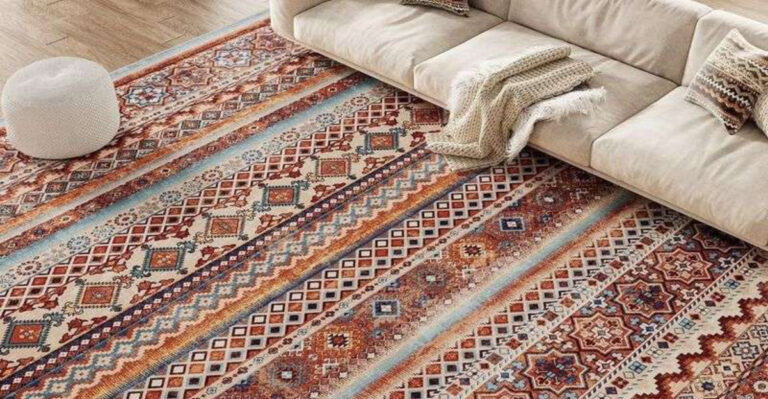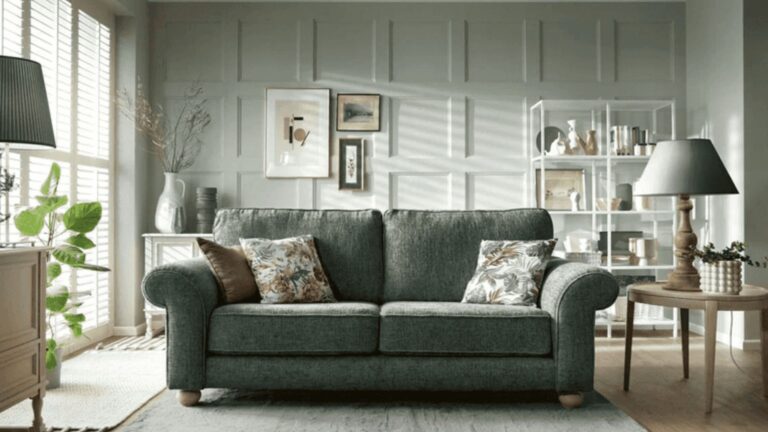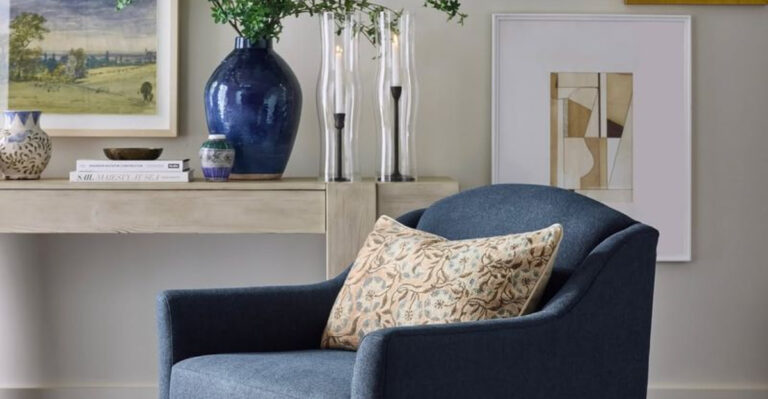10 Living Room Features That Are Super Outdated According To Designers (Plus 8 They Use Instead)
Thinking about giving your living room a little glow-up? Same here. Lately, I’ve been noticing that some of the things we once thought were so stylish are actually dating our spaces big time.
Turns out, interior designers have been quietly moving on from a few old favorites, and once you see the upgrades, you’ll totally get why. I’ve been digging into what they’re phasing out and which fresh ideas are stealing the spotlight instead.
So if your living room’s feeling more blast from the past than modern and cozy, here’s what to swap out for something way better.
1. Matching Furniture Sets
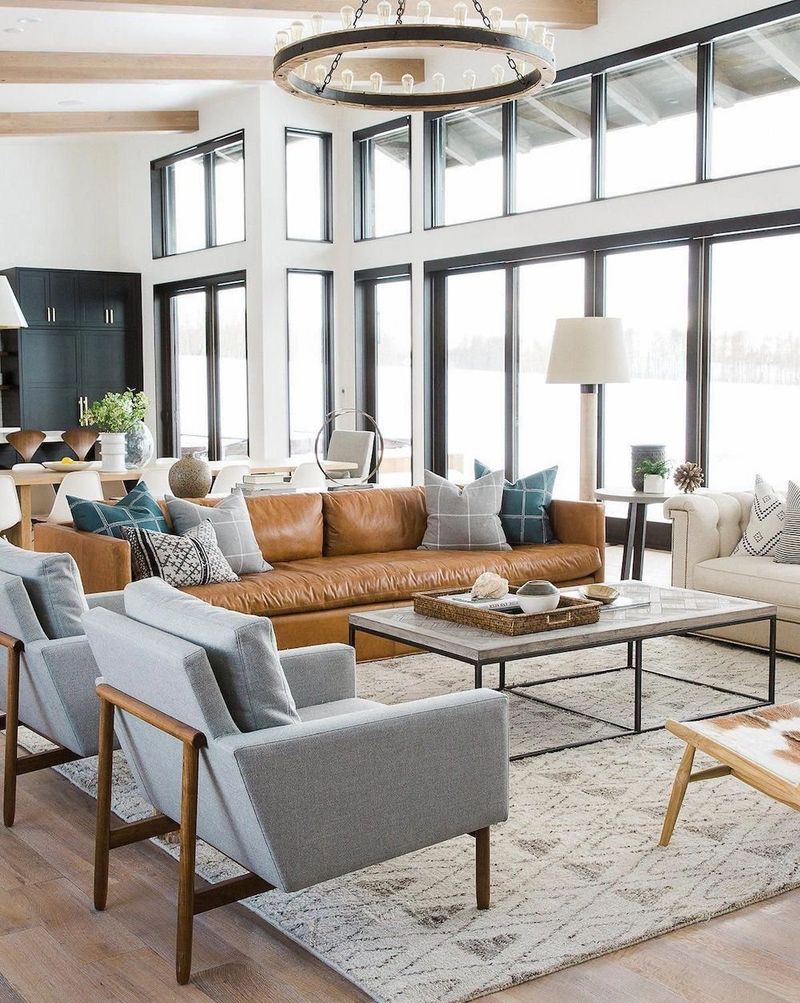
Remember when everyone wanted their sofa, loveseat, and chair in identical fabrics with matching wood trim? Those days are gone! Designers now cringe at these cookie-cutter collections that scream “I bought everything in one shopping trip.”
Modern living rooms thrive on thoughtfully mixed pieces that complement each other without being twins. This approach creates spaces with personality and depth rather than a furniture showroom feel.
2. Heavy Window Treatments
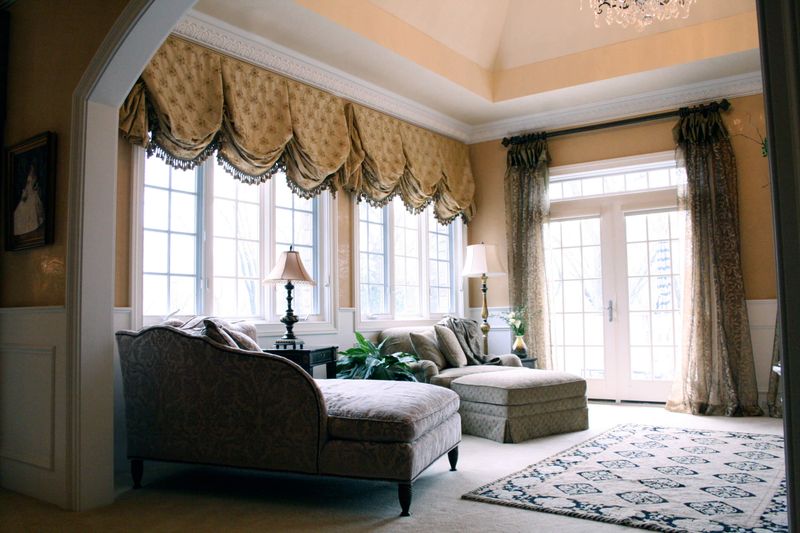
Those massive, multi-layered window treatments with valances, swags, and puddles of fabric collecting dust on the floor? Total design dinosaurs! They block natural light and make rooms feel smaller and stuffier than they actually are.
They also tend to collect dust like nobody’s business, making them impractical for anyone with allergies. Plus, have you ever tried to clean those things? Talk about a weekend-long project!
3. Accent Walls
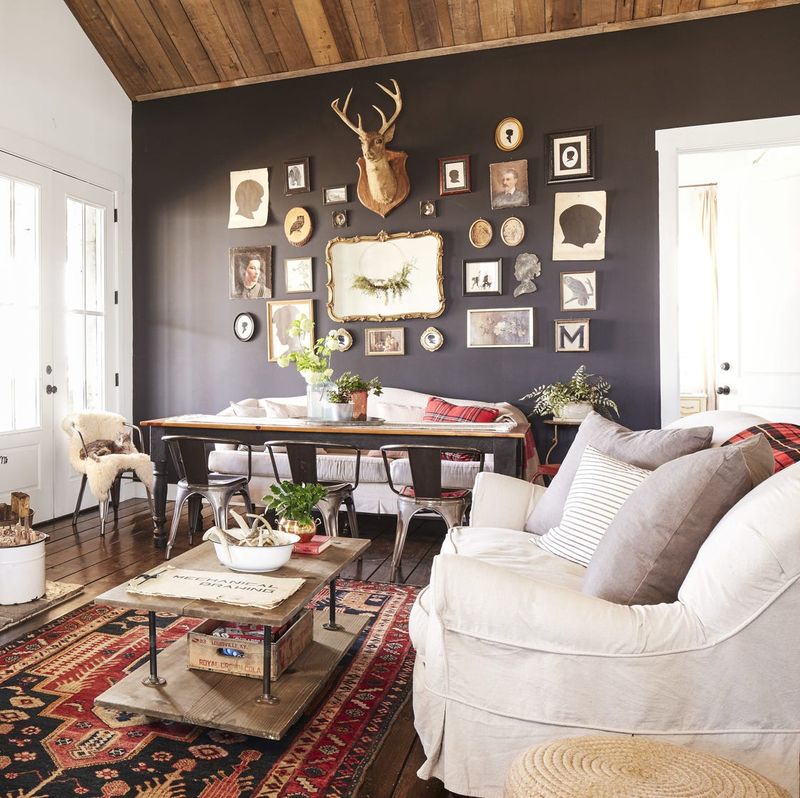
The lone accent wall painted in a bold color was once the hallmark of design shows everywhere. Now it’s seen as a half-hearted commitment that creates visual imbalance rather than interest.
Those random burgundy or forest green walls that were supposed to add “drama” often just look like you ran out of paint or courage halfway through the job.
Even worse are those accent walls covered in busy wallpaper that fight with everything else in the room.
4. Tuscan-Inspired Decor
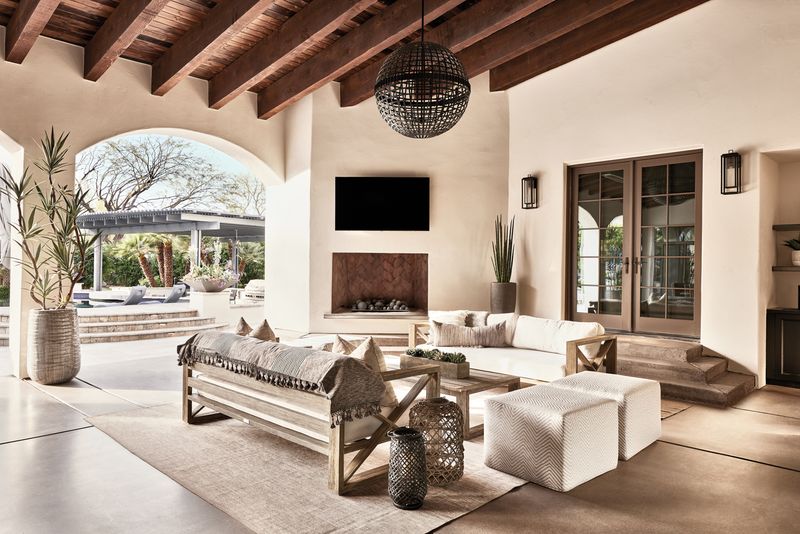
The early 2000s Tuscan trend with its terracotta colors, heavy wrought iron, and faux-finished walls has officially overstayed its welcome.
Those yellow-gold walls paired with heavy dark furniture pieces create spaces that feel gloomy rather than warm.
The fake grapes, olive-themed accessories, and “Live, Laugh, Love” signs in cursive font aren’t fooling anyone into thinking they’re lounging in an Italian villa. This style has become shorthand for dated interiors that need a refresh.
5. Wall-to-Wall Carpeting

Wall-to-wall beige carpeting was once the standard in living rooms across America. Now it ranks high on designers’ most-loathed lists, especially those versions with shorter pile that show every stain and vacuum track.
Beyond looking dated, these carpets harbor dust, allergens, and odors that no amount of cleaning can fully remove.
Ever noticed how even “clean” wall-to-wall carpeting in older homes has that vague musty smell? That’s decades of living happening in those fibers!
6. Overstuffed Leather Recliners
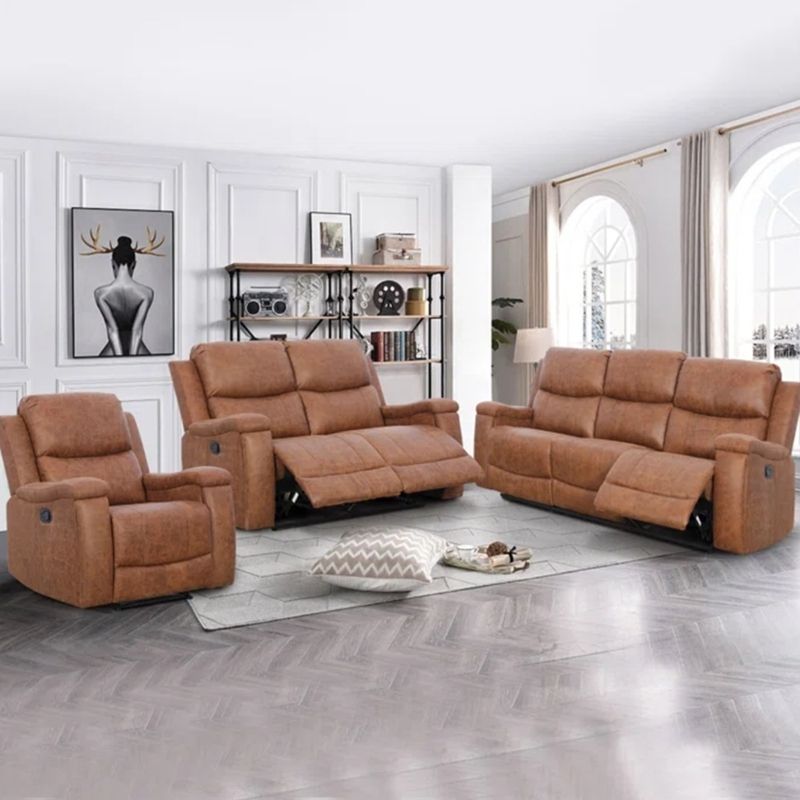
Those bulky leather recliners that look like they belong in a 1990s bachelor pad are major eyesores according to designers.
You know the ones—puffy, oversized, and often in that peculiar brown shade that isn’t quite chocolate but isn’t quite cognac either. While comfort matters, these monstrosities dominate rooms and fight with other furniture pieces.
They’re the furniture equivalent of showing up to a dinner party in sweatpants—comfy but not exactly putting your best foot forward.
7. TV Above The Fireplace
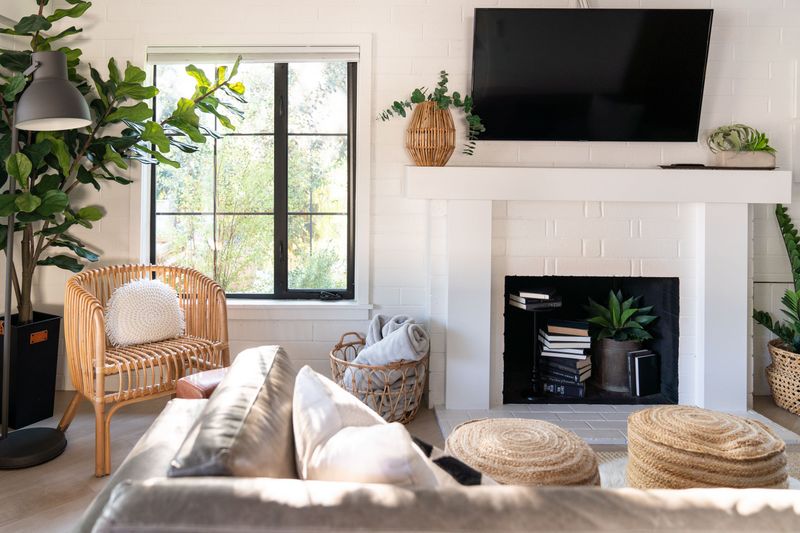
Mounting TVs above fireplaces became wildly popular as flat screens replaced bulky sets. But designers now flag this as both a practical and aesthetic mistake.
The viewing angle forces everyone to crane their necks, and the heat from below can damage your expensive electronics.
From a design perspective, it creates a confusing focal point—are you supposed to look at the fireplace or the TV? This arrangement also tends to make rooms feel like sports bars rather than comfortable living spaces where conversation is valued.
8. Poufy Valances
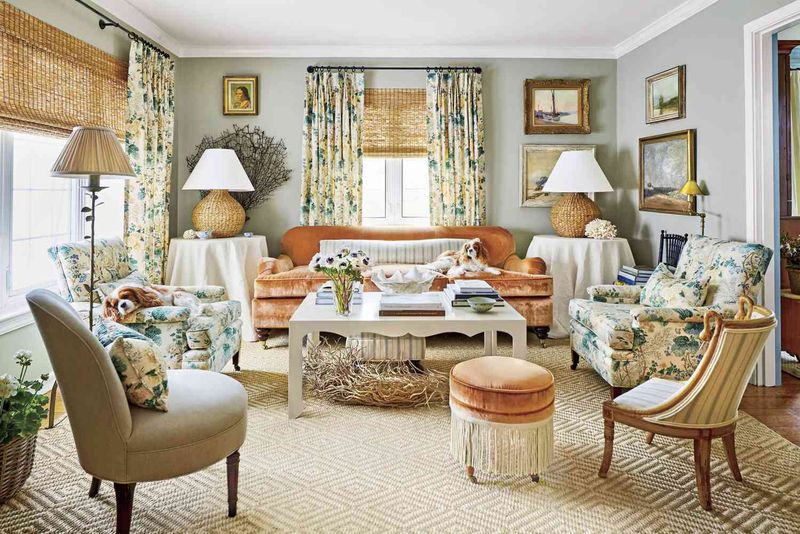
Those puffy fabric valances that look like fabric clouds hanging over your windows? Major design no-nos! They collect dust, block light, and add visual weight to the top of your room where you want lightness.
Often made in fussy patterns with tassels or fringe, these window toppers scream “1980s country kitchen” even when they’re in living rooms.
They’re like shoulder pads for your windows—a trend that should have stayed in the past along with permed hair and neon leg warmers.
9. Glass Block Walls
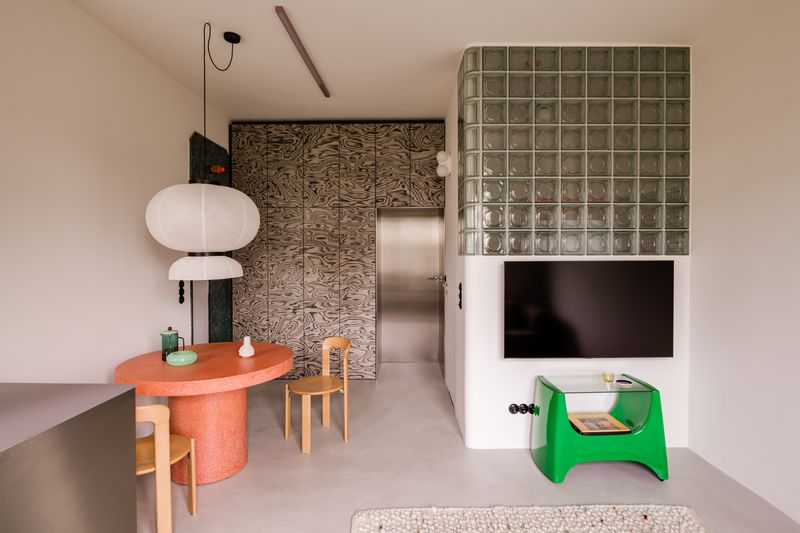
Glass block walls had their moment in the 80s and 90s but now look hopelessly outdated. These chunky translucent blocks were supposed to let light pass while maintaining privacy, but they ended up creating a bathroom-meets-office vibe in living spaces.
The wavy, distorted view they provide feels more claustrophobic than artistic. Plus, they’re nearly impossible to remove without major construction.
If your living room features one of these relics, designers unanimously suggest budgeting for its removal.
10. Shiplap Everywhere
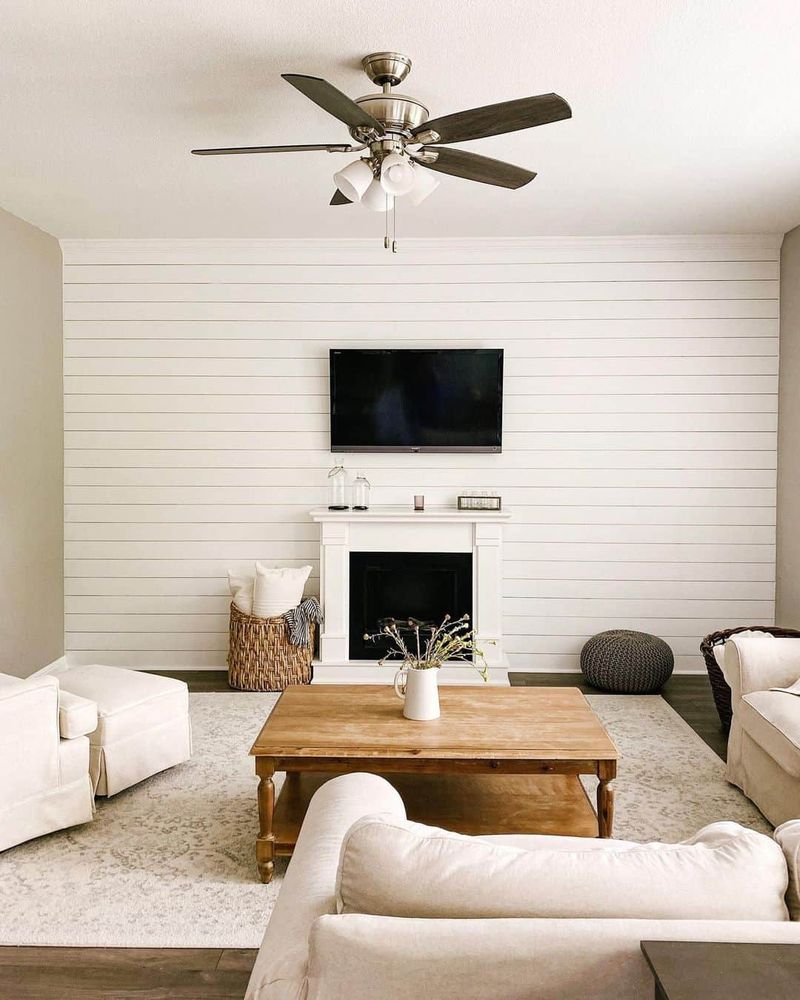
Thanks to certain home renovation shows, shiplap exploded in popularity several years back. Now designers are begging homeowners to put down the white paint and step away from the horizontal wooden boards.
When used everywhere, shiplap creates a visually busy background that competes with furniture and art. It’s also become so ubiquitous that it no longer feels special or authentic.
Unless you actually live in a coastal cottage or converted barn, your living room probably doesn’t need to be wrapped in this trendy wood treatment.
1. Open Shelving Instead Of Bookcases
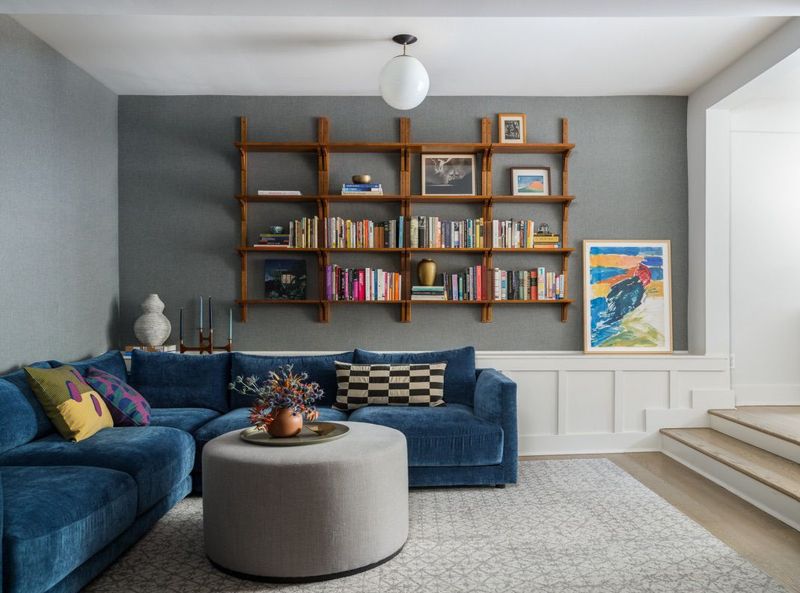
Floating shelves with carefully curated objects look stunning in magazines but function poorly in real life. Designers are moving away from these dust-collecting display areas that require constant styling and cleaning.
Living rooms should be livable, not museum-like installations that need weekly maintenance. Open shelving also tends to create visual clutter that can make relaxation difficult.
Who wants to stare at a wall of knickknacks while trying to unwind after a long day?
2. Statement Sectionals
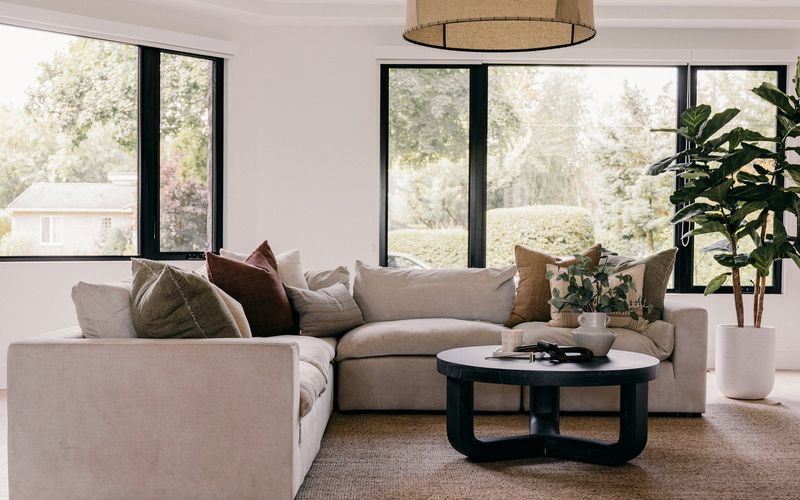
Modular sectionals that can be arranged in multiple configurations offer flexibility that rigid matching sets can’t touch. They allow you to adapt your seating arrangement based on your needs—movie night, game day, or cocktail party.
The best versions come in performance fabrics that stand up to real life with kids and pets. Look for pieces with clean lines in neutral colors, then add personality through pillows and throws that can be switched out when you crave change.
3. Simple Window Treatments
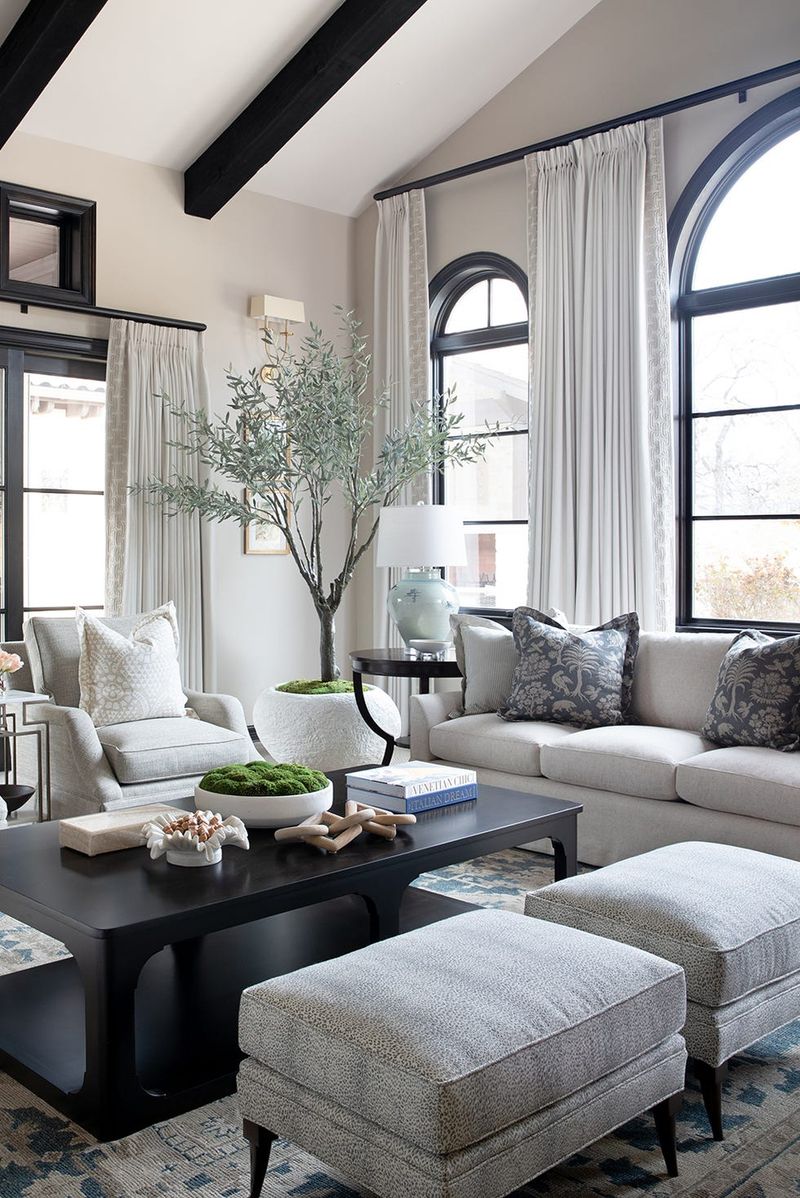
Designers now favor simple, functional window coverings that frame views without stealing the show. Think linen or cotton panels that hang from ceiling to floor, creating a sense of height and elegance.
Roman shades offer another clean option that provides privacy when needed but disappears visually when raised. The key is choosing materials that filter light beautifully rather than blocking it entirely.
Natural fabrics in colors that complement your walls create a seamless look that’s both current and timeless.
4. All-Over Color
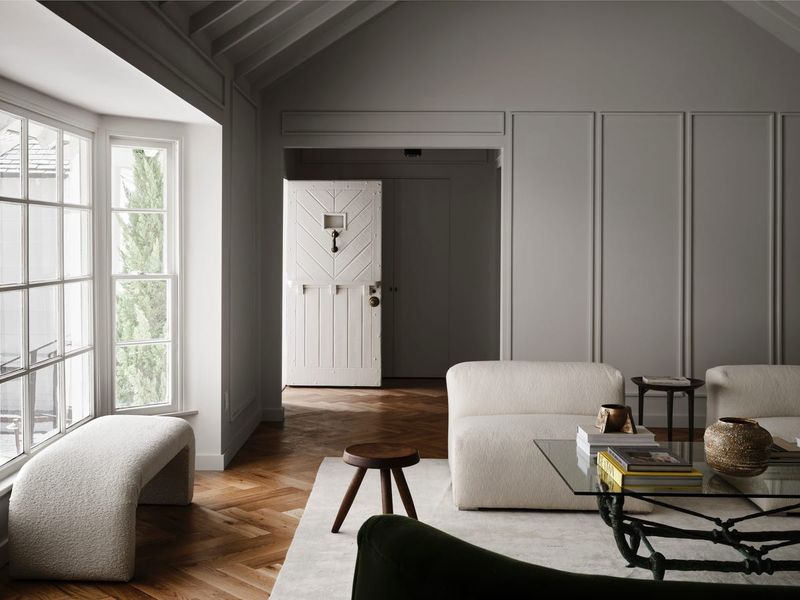
Rather than single accent walls, designers are embracing cohesive color throughout rooms. This doesn’t mean boring—it means using different shades and textures of related colors to create depth.
Painting trim, walls, and even ceilings in variations of the same hue creates a sophisticated envelope that feels intentional and calm.
This approach works with any color palette, from serene blues to dramatic charcoals. The result feels more luxurious and considered than the stop-and-start effect of accent walls.
5. Mediterranean Modern
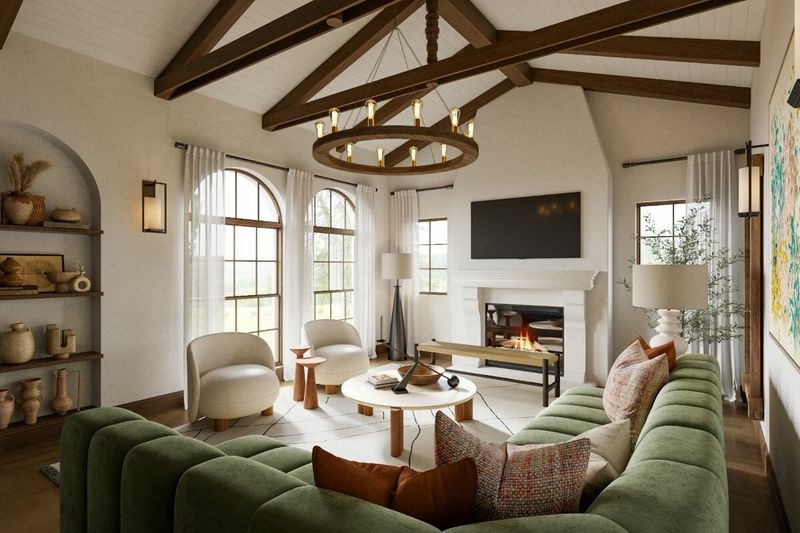
The new Mediterranean isn’t about faux finishes and heavy furniture. It’s a lighter take that incorporates natural materials, textural elements, and a more relaxed attitude.
Think plastered walls in warm whites, natural wood beams, and handmade ceramic accessories that feel authentic rather than themed.
The color palette draws from nature—olive greens, terracotta, and sandy neutrals—but applied with a lighter hand. The result feels traveled and collected rather than copied from a catalog.
6. Hardwood With Area Rugs
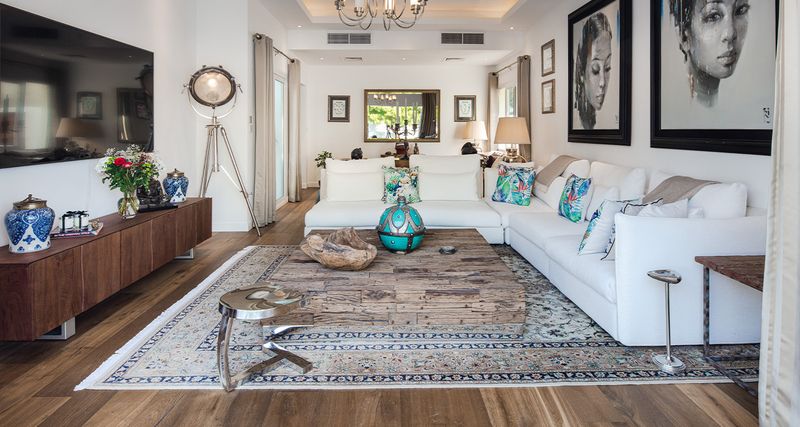
Hardwood floors topped with area rugs offer the perfect balance of warmth and practicality that wall-to-wall carpeting lacks. This combination creates defined spaces within open floor plans while allowing for easy cleaning and replacement.
Today’s favorite woods tend toward light to medium tones with matte finishes that showcase natural grain patterns.
Rugs add color, pattern, and sound absorption without the commitment of carpeting. When they get stained or you simply want a change, you can roll them up rather than calling contractors.
7. Streamlined Recliners
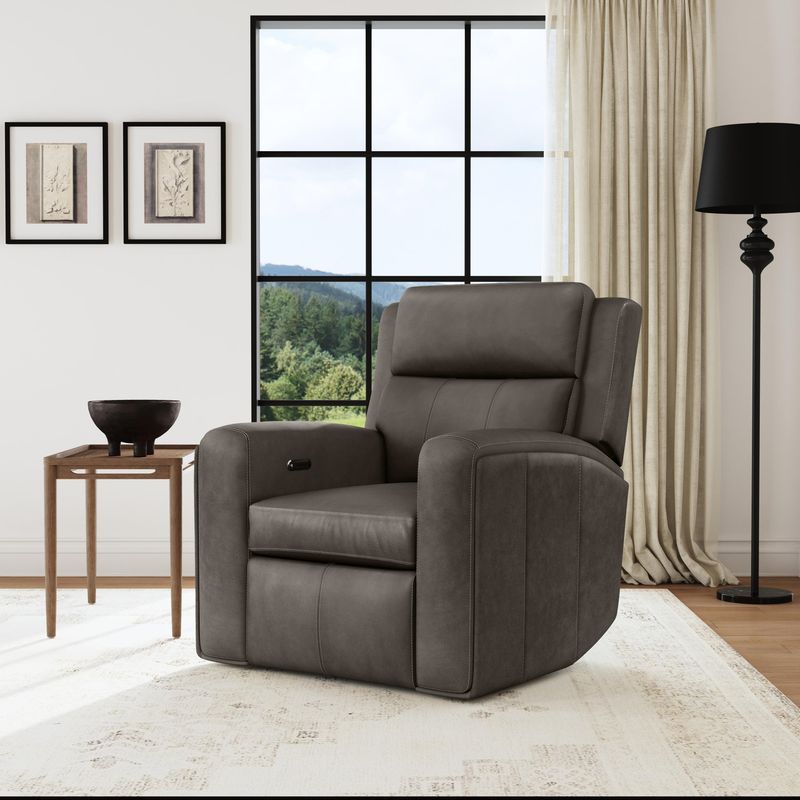
Comfort no longer requires sacrificing style! Modern recliners come in sleek silhouettes that offer all the relaxation without the bulky appearance.
Many designs are so discreet you’d never guess they recline until someone kicks back. Look for options with slim arms, tailored upholstery, and less overstuffed padding.
The mechanical components are better concealed, and the proportions work with other furniture rather than dominating the room. Some even come with power controls and USB ports hidden in the design.
8. Thoughtful Media Integration
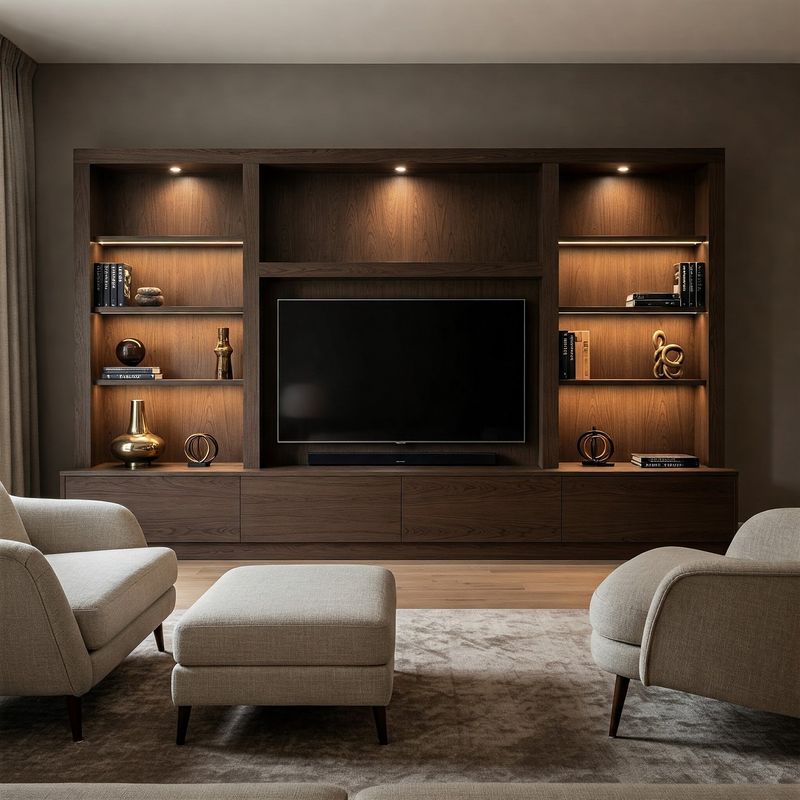
Smart designers now create intentional spaces for technology that don’t make the TV the star. Solutions include dedicated media walls with built-ins that incorporate the screen among books and objects, or projectors that disappear when not in use.
Some opt for TVs designed to display art when turned off, while others use clever cabinetry that hides screens completely.
The goal is acknowledging that we watch TV without letting it dominate our living spaces visually or energetically.

